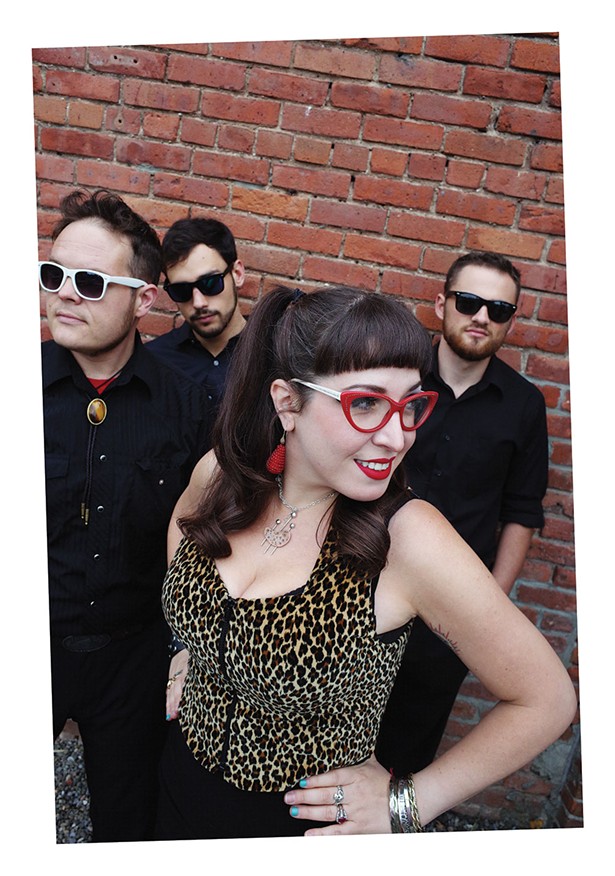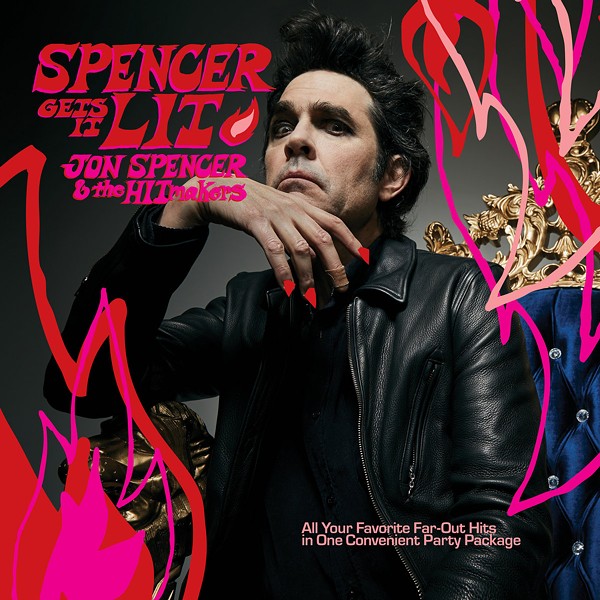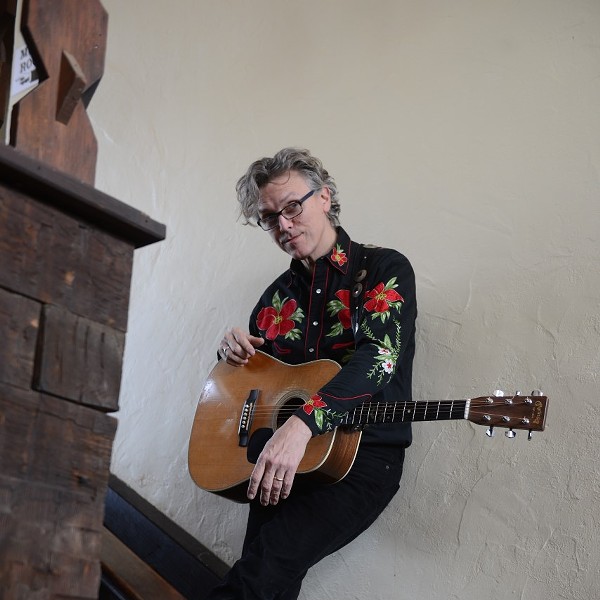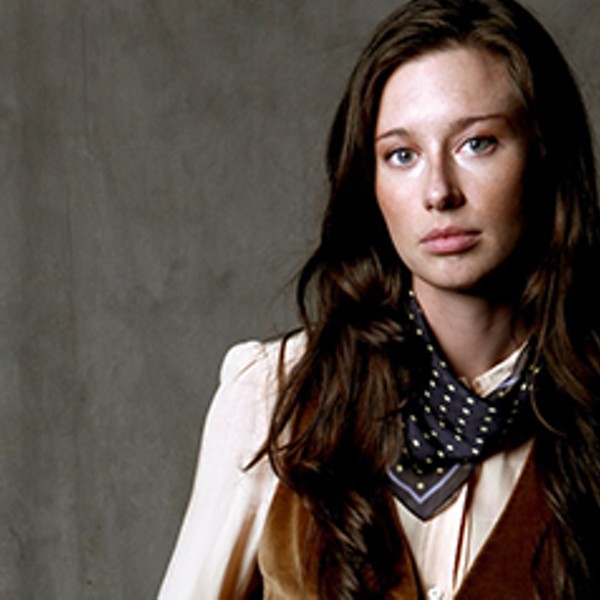The music called rockabilly, one of the earliest strains of rock 'n' roll, arrived in rural, mid-1950s America when country and western music plowed head on into rhythm and blues—exploding into an Atomic Age mess of quivering tempos, twanged-out guitar, and cat-in-heat vocals. Elvis Presley, Gene Vincent, Charlie Feathers. Their hootin', hollerin' heyday was more than 60 years ago. Much evolution has since occurred in the world of rock. Yet to this day there are rockabilly bands in all corners of this and every other continent, raising a ruckus with their doghouse basses and slap-backed singers to packs of pompadoured and poodle-skirted prancers at '50s-themed gatherings (see this month's Rockin' & Ridin' Festival in Cape Town, South Africa). And it's safe to say the majority of the musicians in these groups weren't even a glimmer in Grandpa's eye when the Big Beat was being born. One such outfit is Kingston's own Lara Hope and the Ark-Tones, whose members are in their tender 20s and 30s. So what is it, then, about this ancient—by pop music standards—American artform that makes younger musicians like them want to play it?
"It's happy music," Hope explains from behind her trademark red cat eye frames. "And it's dance music, it gets your feet tapping. It's not sit-on-your-ass music. For some people today it's dubstep that's dance music. But to me [rockabilly] is more accessible—and it doesn't hurt your ears as much."
But while rockabilly is clearly their central focus, it wouldn't be precise to say that the Ark-Tones, whose current lineup, besides Hope (born Lara Hope Levine) on lead vocals and acoustic guitar, includes her husband, bassist Matt Goldpaugh and new drummer Eli Marzano and guitarist Eddie Rion, are unyieldingly slavish in their stylistic devotion. Between the expected rockabilly boppers, Love You to Life, their second album, released last August, detours into soul balladry ("I'm Yours"), straight-up country weepers ("This is What I've Got"), and Latin-tinged rhumbas (the title track). "Early rock 'n' roll and roots music are definitely the creative starting point," Hope says. "But even though we love that music, we don't want to just rewrite old songs."
Hope hails from the perhaps unlikely rockabilly hotspot of Plainview, Long Island (then again, Stray Cats main man Brian Setzer grew up in nearby Massapequa, so perhaps there's some magic moonshine in Oyster Bay Harbor). "It's pretty much this upper-middle class, white, Jewish bubble," she says. "Not very well-rounded, compared to Ulster County. But you can get awesome bagels, pizza, and Chinese food there." She inherited her show-biz blood from her single mom, a former lounge singer who still performs in local community theater. "Because of her I auditioned for a production of 'Oliver!' when I was nine, and I got the lead part," recalls Hope. "I loved being up in front of an audience, the applause and everything. So that got me into doing community theater from then until I was around 14." She also sang in theater and school choirs and learned guitar, writing her first songs in high school as she found her way into rock via Nirvana, the Pixies, the Violent Femmes, Liz Phair, and other alternative acts. The night before she left for SUNY Albany to major in marketing—a field of study that has come in handy in her side role as the Ark-Tones' de facto PR chief—the effusive lead-singer-to-be made her solo debut at a Plainview-area open mic night (the experience turned Hope into a champion of the format; for the next 12 years, she ran open mics on campus and at various Hudson Valley venues).
At college she sang in an all-girl acapella group called the Sexy Bitches (a play on the marketing term "sexy pitches") and, after applying to SUNY New Paltz, moved into a house there occupied by her high school best friend—a fellow female musician whose real middle name is also, coincidentally, Hope. Fueled by a shared love of the White Stripes and with Lara on bass and vocals, the two formed the Red Hopes. "Before that I'd really only played solo acoustic or acapella," Hope remembers. "But as soon as I started singing with a drummer and other musicians behind me, I was, like, 'Whoah, this is it! From now on, I wanna be in a band!'" Unfortunately, it turned out the hopes of the Red Hopes were a little too high, and the group disintegrated after recording one lost album. But, bitten by the band bug, Hope was determined. She joined seminal New Paltz punk trio NCM before forming her own three-piece punk act, Tiger Piss (AKA Tiger Iss), which released a handful of CDs, managed to do some touring, and became a staple of the New Paltz/Kingston scene. It was within that world that she began to fall hard for the rockabilly twang.

















